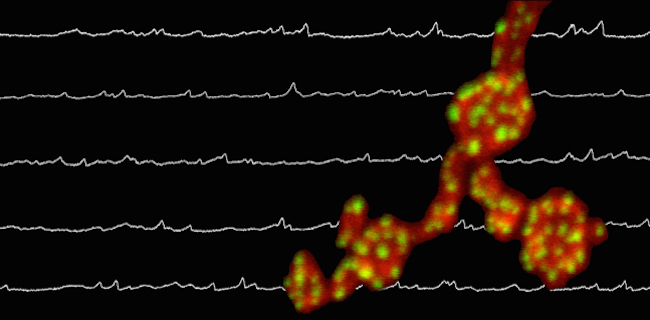Brain ‘noise’ found to nurture synapses
May 8, 2014

A developing Drosophila synapse superimposed over electrophysiology recordings of minis (credit: Lab of Brian McCabe, PhD/ Columbia University Medical Center)
A long-overlooked form of neuron-to-neuron communication called “miniature neurotransmission” plays an essential role in the development of synapses, a study by researchers at Columbia University Medical Center (CUMC) has shown.
The findings, made in fruit flies, raise the possibility that abnormalities in miniature neurotransmission may contribute to neurodevelopmental diseases. The findings were published in the journal Neuron.
The primary way in which neurons communicate with each another is through “evoked neurotransmission.” This process begins when an electrical signal, or action potential, is transmitted along a long, cable-like extension of the neuron called an axon. Upon reaching the axon’s terminus, the signal triggers the release of chemicals called neurotransmitters across the synapse.
No comments:
Post a Comment